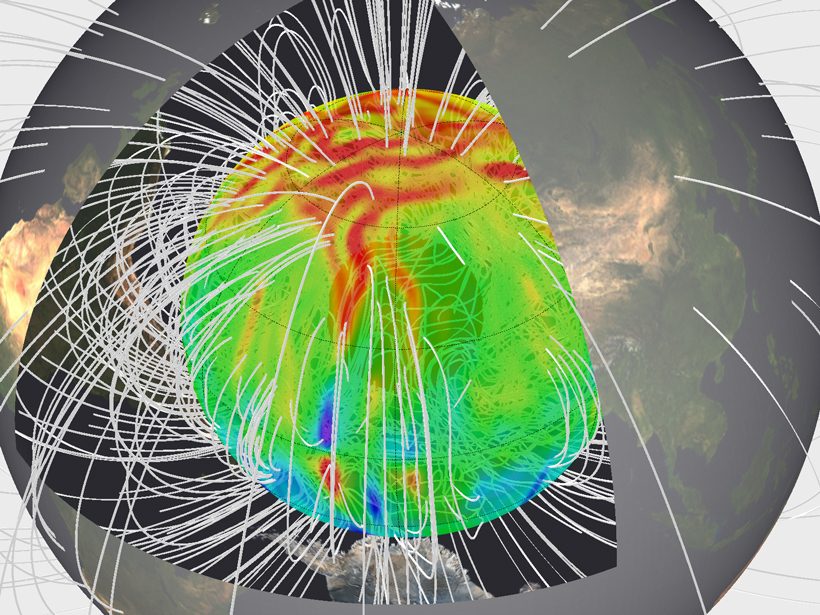Source: Geochemistry, Geophysics, Geosystems
Scientists have long sought to understand the origin and development of Earth’s geomagnetic field, which is continually generated by convection in the Earth’s conductive liquid outer core. Numerical modeling, so-called geodynamo simulations, has played an important role in this quest, but the extremely high resolution required for these models prevents current versions from replicating realistic, Earth-like conditions. As a result, fundamental questions about the outer core’s dynamics are left unanswered.
Despite the need for more efficient computation, most current geodynamo models incorporate computing structures that can hinder the parallel processing necessary to achieve this. To evaluate which numerical models will most effectively operate on the next generation of “petascale” supercomputers, Matsui et al. ran identical tests of 15 numerical geomagnetic models, then compared their performance and accuracy to two standard benchmarks.
They found that models using two- or three-dimensional parallel processing are capable of running efficiently on 16,384 processor cores—the maximum number available in the Texas Advanced Computing Center’s Stampede, one of the world’s most powerful supercomputers. The authors further extrapolated that methods simulating the expansion of spherical harmonics—the mathematical equations describing functions on a sphere’s surface—combined with two-dimensional parallel processing will offer the best available tools for modeling the Earth’s magnetic field during simulations using up to 107 processor cores.
According to the researchers, future work is needed to clarify several outstanding points, including determining which methods of variable time stepping are most efficient and exact and how accurately models will be able to simulate the turbulent flow presumed to occur in the outer core. Solving such challenges should greatly improve simulations of Earth’s magnetic field, as well as those of other planets and stars. (Geochemistry, Geophysics, Geosystems, doi:10.1002/2015GC006159, 2016)
—Terri Cook, Freelance Writer
Citation: Cook, T. (2016), Which geodynamo models will work best on next-gen computers?, Eos, 97, doi:10.1029/2016EO047707. Published on 11 March 2016.
Text © 2016. The authors. CC BY-NC 3.0
Except where otherwise noted, images are subject to copyright. Any reuse without express permission from the copyright owner is prohibited.

